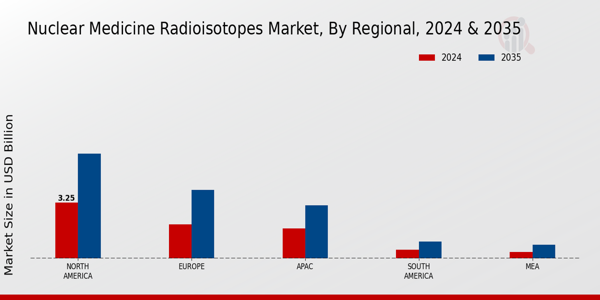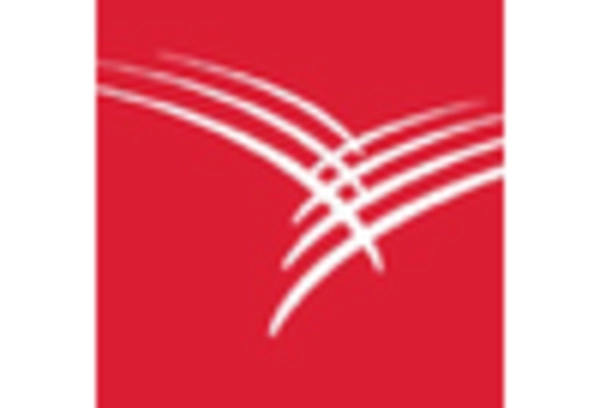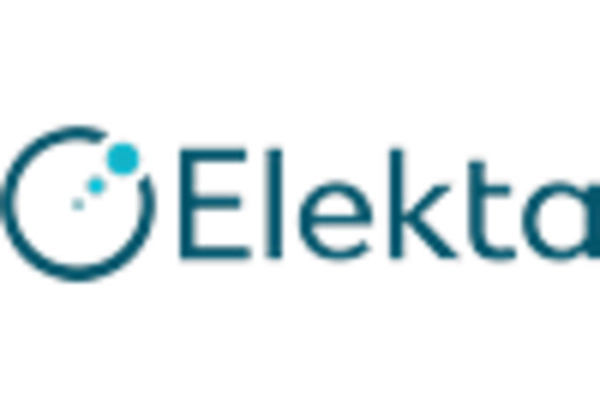Growing Focus on Targeted Therapies
The shift towards personalized medicine and targeted therapies is influencing the Nuclear Medicine Radioisotopes Market. As healthcare moves away from one-size-fits-all approaches, the need for radioisotopes that can deliver targeted treatment becomes more pronounced. Radioisotopes such as Lutetium-177 and Radium-223 are gaining traction for their ability to selectively target cancer cells, minimizing damage to surrounding healthy tissues. This trend aligns with the increasing emphasis on patient-centric care, where treatments are tailored to individual patient profiles. The market is expected to witness a robust growth trajectory as more healthcare providers adopt targeted therapies, with projections indicating a potential market expansion of over 10% annually in the next few years.
Increasing Incidence of Chronic Diseases
The rising prevalence of chronic diseases such as cancer and cardiovascular disorders is a primary driver for the Nuclear Medicine Radioisotopes Market. As these conditions become more common, the demand for diagnostic and therapeutic procedures utilizing radioisotopes is expected to surge. For instance, the World Health Organization has reported a steady increase in cancer cases, which necessitates advanced imaging techniques for early detection and treatment. This trend indicates a growing reliance on nuclear medicine, as radioisotopes play a crucial role in both diagnosis and therapy. The market is projected to expand significantly, with estimates suggesting a compound annual growth rate of over 8% in the coming years, driven by the need for effective treatment options for chronic diseases.
Expanding Applications in Veterinary Medicine
The Nuclear Medicine Radioisotopes Market is experiencing growth due to the expanding applications of radioisotopes in veterinary medicine. As pet ownership rises, there is an increasing demand for advanced diagnostic and therapeutic options for animals. Radioisotopes are being utilized in various veterinary procedures, including cancer treatment and imaging for diagnosing diseases in pets. This trend reflects a broader recognition of the importance of animal health and the willingness of pet owners to invest in advanced medical care for their animals. The market for veterinary nuclear medicine is expected to grow, potentially contributing to the overall expansion of the nuclear medicine sector, as more veterinary clinics adopt these advanced technologies.
Rising Investment in Research and Development
Investment in research and development within the Nuclear Medicine Radioisotopes Market is on the rise, driven by the need for innovative solutions in diagnostics and therapeutics. Governments and private entities are allocating substantial funds to explore new radioisotope applications and improve existing technologies. This influx of capital is likely to accelerate the development of novel radioisotopes and enhance production capabilities. Furthermore, collaborations between academic institutions and industry players are fostering innovation, leading to breakthroughs in nuclear medicine. As research continues to advance, the market is poised for growth, with analysts forecasting an increase in the number of approved radioisotope-based therapies and diagnostics in the near future.
Technological Innovations in Imaging Techniques
Technological advancements in imaging modalities are propelling the Nuclear Medicine Radioisotopes Market forward. Innovations such as hybrid imaging techniques, including PET/CT and SPECT/CT, enhance the accuracy and efficiency of diagnostic procedures. These technologies allow for better visualization of physiological processes, leading to improved patient outcomes. The integration of artificial intelligence in image analysis further streamlines workflows and enhances diagnostic precision. As healthcare providers increasingly adopt these advanced imaging systems, the demand for radioisotopes used in these procedures is likely to rise. Market analysts project that the adoption of new imaging technologies will contribute to a substantial increase in the utilization of nuclear medicine, thereby expanding the market significantly.


















Leave a Comment